Opinion
Valuable Indian lessons on human-elephant conflict
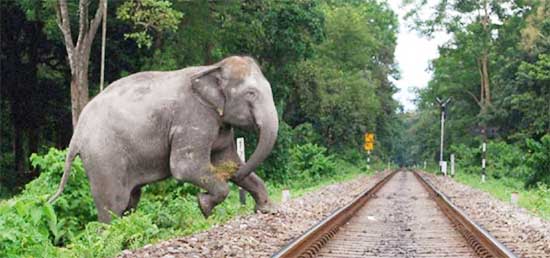
By JAGATH C. SAVANADASA
Email- jaysavana123@gmail.com
It is an absorbing and insightful success story about the management of the most visible and emotional man versus animal conflicts between humans and elephants.
This article examines the methods and techniques deployed at times using modern technology by India, to minimise damage besides conserving elephants and protecting human life.
This is indeed an object lesson on how a huge complex yet powerful nation has achieved success to preserve a large elephant population
This article is culled from a news magazine India Today published weekly, which has a worldwide circulation.
At the centre of the conflict is the ultimate tragedy – the deaths of both humans and the animals.
Briefly, it begins with the encroachment of the elephant habitat by man. This forces these animals to venture out of their forest confines in search of food. The result more often than not is a deadly clash.
In legal and glorified terms it could be called territorial aggrandizement either way by man or elephant.
Of course, there are other relevant factors like the unavailability of water for elephants following persistent droughts, and changing climatic patterns and damage to cultivation by elephants, leading to grain and food shortages for villagers.
But let us begin this narrative with an incident relating to recent elephant deaths in India.
Out of a herd of 13 elephants, seven had died following their contact with a loosely dangling live K.V line in a paddy field in the district of Odisha, due to electrocution. This led to an immediate response, signifying how alert the relevant authorities are in India. An institution named The National Green Tribunal, through a newly formed committee, had examined carefully the actual cause of the tragedy. Following its findings, the committee called on the local power utility to make a deposit of I.R. 1 crore the equivalent of I.R. 10 million, since it held that the deaths of the precious animals were due to apathy and negligence of the utility.
The deposit was to be made to the warden of wildlife.
The Indian elephant population
It is interesting to note that the Indian population of elephants which is between 27,000 and 30,000 is the largest of the species of a single country in Asia, which currently has a population of 40,000. These figures are, however, subject to dispute.
In terms of the deaths of these animals, each year it ranges from 100-120.
In contrast, arising from the conflict between the two, about 1300 people have died in India over the last 4 years.
One reason adduced to this situation, based on research, clearly shows the depletion of forests is the prime factor. Arising from this is the fact that the depletion impels the elephants to search for new habitats, which often go into villages.
Thus there emerges a disastrous situation, the Indian report opines.
On the other hand, “India Today” contends that her elephant population has stabilized, and that it is not the human- elephant combat that is at the heart of the issue but the destruction of forests.
Mega herbivores
Elephants are a large migratory species. It is reported to have a travel range of approximately 150-350 sq. kilometers annually.
Elephants also have, on the basis of their huge body proportions, an equally huge appetite and in order to satisfy their needs, they target fields and plantations nearby their usual habitats. Each elephant consumes on an average 150 kg of food and 200-300 litres of water daily.
Quite often one could see, in the media, these lovable creatures in desperate search of food, making forays into places outside their usual domain, only to be mowed down by rail. One could also see pictures of men lying on the ground killed by elephants when they enter fields.
Evidence in India, as much as in Sri Lanka, the latter to a limited extent points to the fact that it is mainly development projects such as roads and transmission lines, apart from mines and dams that make great inroads into the elephant habitat and disrupt their life patterns.
Additionally in India a big canal in extent 16 km for a hydro-electricity project in Uttarakhand resulted in paving the way to destroying an existing elephant boundary. Adding fuel to this problem, is the open border between India and Nepal, only for humans.
Elephants are kept out of it through a 17 k.m fence. The Indian elephant population, the article reveals, had been subject to forced migration due to rampant mining activity in Odisha. Such activity had begun in the 1980s and as a result today about 300 elephants are relocated within 30000 Sq Km of forest in Chhattisgarh. Similar changes have been carried out in Jharkhand and every year about 150 elephants are moved into this territory.
A local terrorist group called Bodo, which was active for about a decade in the 1980s, had led to the death of about 100 elephants annually from 1980-1990.
Project Elephant
In 1992 India introduced the Project Elephant plan incorporating Elephant Reserves. Conceptually the plan was designed to create Elephant Reserves that should encounter minimum resistance from the local populace. 30 such reserves are in existence today, and their combined land area is approximately 60,000 SQ Km.
Significantly this has led to impressive results. In the last 37 years the elephant population doubled to 30,000 on the basis of a 2017 census.
However a resultant major issue is the presence of a big elephant population in areas that cannot support them.
Habitat Management
India, in the manner of Sri Lanka, though ours is of a lesser magnitude, considers habitat management a formidable task. Though India has identified some 160 odd elephant corridors (which unlike Sri Lanka) includes 17 international corridors between India and Bangladesh, Bhutan, Myanmar and Nepal, all inter-connected nations of course on one or single land mass. Only these 17 are considered a safe passage for elephants.
They are spread over an area of 1600-2000 Sq km. but in terms of area only about 600 to 800 Sq km’s are genuinely safe areas.
Poaching
Poaching in India is severely curtailed, thanks to remedial action and also due to shortage of tuskers. This menace is likely to return once the elephants born in the 1980s would have grown tusks.
Also, according to the Wildlife Institute of India (W.I.I) the population of elephants need monitoring scientifically. Especially, the mother-to-calf ratio, or the number of breeding cows per 100 specimens
However, it needs to be mentioned that policies applied in respect of tiger conservation, which India carried out successfully, cannot be applied to elephant conservation. The rationale is that you could keep tigers within their reserves, but this is not possible in case of elephants.
But in certain areas of India a degree of success has been achieved, and inviolate habitats for elephants are created by moving human populations outside the areas reserved for elephants.
New conservation measures
An innovation that seems successful is the installation of bio-acoustics based sensors along rail tracks in Assam and West Bengal. It is reported that these sensors are able to track the sounds arising from elephant movement and transmit them to a control centre. As a result 10 drivers could initiate evasive action.
Bio-acoustics are already utilized in the oceans which monitor movement of whales and dolphins. The objective is to prevent them from swimming onto ships and other sea borne vessels .
Professor Michael Andrew of the University of Catalina, Spain a global expert in Bio Acoustics who is responsible for its introduction to India, calls this a major breakthrough. He adds passive acoustics technology offers a unique opportunity to balance human interests and wildlife conservation, but another view notes that sensors are just one way to detect the presence of elephants. In other words it is just a tool. According to a leading Indian expert Prof. Raman Sukumar of the Indian Institute of Science, sensors need to be supplemented with other techniques.
Despite a few drawbacks, one could visualize the coherent and cogent policies India has applied in preventing elephant deaths and also minimizing damage in this seemingly intractable conflict between man and elephant.
Opinion
Thoughts for Unduvap Poya
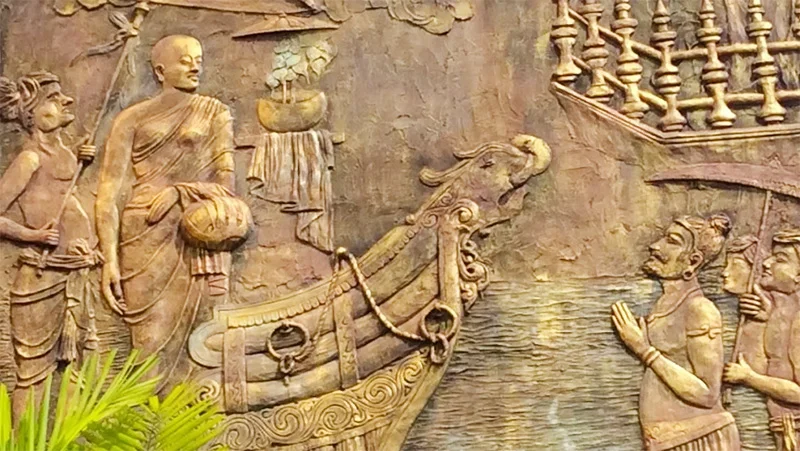
Unduvap Poya, which falls today, has great historical significance for Sri Lanka, as several important events occurred on that day but before looking into these, as the occasion demands, our first thought should be about impermanence. One of the cornerstones of Buddha’s teachings is impermanence and there is no better time to ponder over it than now, as the unfolding events of the unprecedented natural disaster exemplify it. Who would have imagined, even a few days ago, the scenes of total devastation we are witnessing now; vast swathes of the country under floodwaters due to torrential rain, multitudes of earth slips burying alive entire families with their hard-built properties and closing multiple trunk roads bringing the country to a virtual standstill. The best of human kindness is also amply demonstrated as many risk their own lives to help those in distress.
In the struggle of life, we are attached and accumulate many things, wanted and unwanted, including wealth overlooking the fact that all this could disappear in a flash, as happened to an unfortunate few during this calamitous time. Even the survivors, though they are happy that they survived, are left with anxiety, apprehension, and sorrow, all of which is due to attachment. We are attached to things because we fail to realise the importance of impermanence. If we do, we would be less attached and less affected. Realisation of the impermanent nature of everything is the first step towards ultimate detachment.
It was on a day like this that Arahant Bhikkhuni Sanghamitta arrived in Lanka Deepa bringing with her a sapling of the Sri Maha Bodhi tree under which Prince Siddhartha attained Enlightenment. She was sent by her father Emperor Ashoka, at the request of Arahant Mahinda who had arrived earlier and established Buddhism formally under the royal patronage of King Devanampiyatissa. With the very successful establishment of Bhikkhu Sasana, as there was a strong clamour for the establishment of Bhikkhuni Sasana as well, Arahant Mahinda requested his father to send his sister which was agreed to by Emperor Ashoka, though reluctantly as he would be losing two of his children. In fact, both served Lanka Deepa till their death, never returning to the country of their birth. Though Arahant Sanghamitta’s main mission was otherwise, her bringing a sapling of the Bo tree has left an indelible imprint in the annals of our history.
According to chronicles, King Devanampiyatissa planted the Bo sapling in Mahamevnawa Park in Anuradhapura in 288 BCE, which continues to thrive, making it the oldest living human planted tree in the world with a known planting date. It is a treasure that needs to be respected and protected at all costs. However, not so long ago it was nearly destroyed by the idiocy of worshippers who poured milk on the roots. Devotion clouding reality, they overlooked the fact that a tree needs water, not milk!
A monk developed a new practice of Bodhi Puja, which even today attracts droves of devotees and has become a ritual. This would have been the last thing the Buddha wanted! He expressed gratitude by gazing at the tree, which gave him shelter during the most crucial of times, for a week but did not want his followers to go around worshipping similar trees growing all over. Instead of following the path the Buddha laid for us, we seem keen on inventing new rituals to indulge in!
Arahant Sanghamitta achieved her prime objective by establishing the Bhikkhuni Sasana which thrived for nearly 1200 years till it fell into decline with the fall of the Anuradhapura kingdom. Unfortunately, during the Polonnaruwa period that followed the influence of Hinduism over Buddhism increased and some of the Buddhist values like equality of sexes and anti-casteism were lost. Subsequently, even the Bhikkhu Sasana went into decline. Higher ordination for Bhikkhus was re-established in 1753 CE with the visit of Upali Maha Thera from Siam which formed the basis of Siam Maha Nikaya. Upali Maha Thero is also credited with reorganising Kandy Esala Perahera to be the annual Procession of the Temple of Tooth, which was previously centred around the worship of deities, by getting a royal decree: “Henceforth Gods and men are to follow the Buddha”
In 1764 CE, Siyam Nikaya imposed a ‘Govigama and Radala’ exclusivity, disregarding a fundamental tenet of the Buddha, apparently in response to an order from the King! Fortunately, Buddhism was saved from the idiocy of Siyam Nikaya by the formation of Amarapura Nikaya in 1800 CE and Ramanna Nikaya in 1864 CE, higher ordination for both obtained from Burma. None of these Niakya’s showed any interest in the re-establishment of Bhikkhuni Sasana which was left to a band of interested and determined ladies.
My thoughts and admiration, on the day Bhikkhuni Sasana was originally established, go to these pioneers whose determination knew no bounds. They overcame enormous difficulties and obtained higher ordination from South Korea initially. Fortunately, Ven. Inamaluwe Sri Sumangala Thero, Maha Nayaka of Rangiri Dambulla Chapter of Siyam Maha Nikaya started offering higher ordination to Bhikkhunis in 1998 but state recognition became a sore point. When Venerable Welimada Dhammadinna Bhikkhuni was denied official recognition as a Bhikkhuni on her national identity card she filed action, with the support of Ven. Inamaluwe Sri Sumangala Thero. In a landmark majority judgement delivered on 16 June, the Supreme Court ruled that the fundamental rights of Ven. Dhammadinna were breached and also Bhikkhuni Sasana was re-established in Sri Lanka. As this judgement did not receive wide publicity, I wrote a piece titled “Buddhism, Bhikkhus and Bhikkhunis” (The Island, 10 July 2025) and my wish for this Unduvap Poya is what I stated therein:
“The landmark legal battle won by Bhikkhunis is a victory for common sense more than anything else. I hope it will help Bhikkhuni Sasana flourish in Sri Lanka. The number of devotees inviting Bhikkhunis to religious functions is increasing. May Bhikkhunis receive the recognition they richly deserve.” May there be a rapid return to normalcy from the current tragic situation.”
by Dr Upul Wijayawardhana
Opinion
Royal Over Eighties
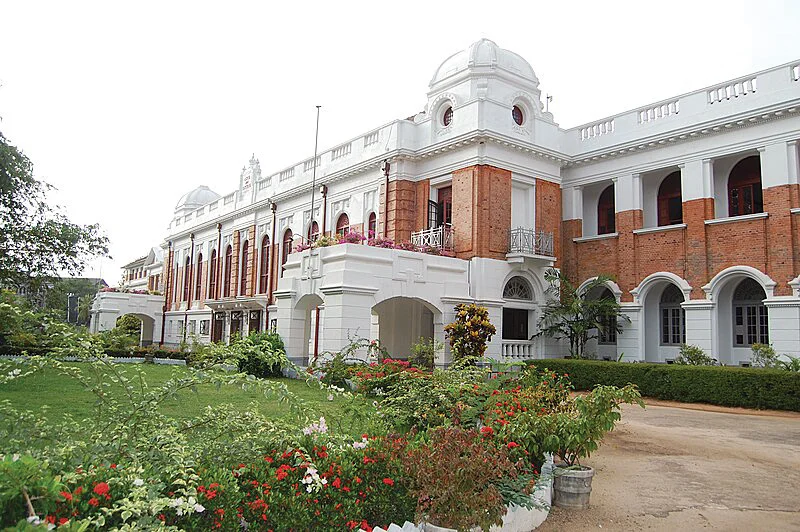
The gathering was actually of ‘Over Seventies’ but those of my generation present were mostly of the late eighties.
Even of them I shall mention only those whom I know at least by name. But, first, to those few of my years and older with whom speech was possible.
First among them, in more sense than one, was Nihal Seneviratne, at ninety-one probably the oldest present. There is no truth to the story that his state of crisp well-being is attributable to the consumption of gul-bunis in his school days. It is traceable rather to a life well lived. His practice of regular walks around the house and along the lane on which he lives may have contributed to his erect posture. As also to the total absence of a walking stick, a helper, or any other form of assistance as he walked into the Janaki hotel where this gathering took place.
Referencing the published accounts of his several decades-long service in Parliament as head of its administration, it would be moot to recall that his close friend and fellow lawyer, J E D Gooneratne, teased him in the following terms: “You will be a bloody clerk all your life”. He did join service as Second Assistant to the Clerk to the House and moved up, but the Clerk became the Secretary General. Regardless of such matters of nomenclature, it could be said that Nihal Seneviratne ran the show.
Others present included Dr. Ranjith de Silva, Surgeon, who was our cricket Captain and, to the best of my knowledge, has the distinction of never engaging in private practice.
The range of Dr. K L (Lochana) Gunaratne’s interests and his accomplishments within each are indeed remarkable. I would think that somebody who’d received his initial training at the AA School of Architecture in London would continue to have architecture as the foundation of his likes /dislikes. Such would also provide a road map to other pursuits whether immediately related to that field or not. That is evident in the leadership roles he has played in the National Academy of Sciences and the Institute of Town Planners among others. As I recall he has also addressed issues related to the Panadura Vadaya.
My memories of D L Seneviratne at school were associated with tennis. As happens, D L had launched his gift for writing over three decades ago with a history of tennis in Sri Lanka (1991). That is a game with which my acquaintance is limited to sending a couple of serves past his ear (not ‘tossing the ball across’ as he asked me to) while Jothilingam, long much missed, waited for his team mates to come for practices. It is a game at which my father spent much time both at the Railway sports club and at our home-town club. (By some kind of chance, I recovered just a week ago the ‘Fred de Saram Challenge Cup’ which, on his winning the Singles for the third time, Koo de Saram came over to the Kandana Club to hand over to him for keeps. They played an exhibition match which father won). D L would know whether or not, as I have heard, in an exhibition match in Colombo, Koo defeated Frank Sedgman, who was on his triumphant return home to Oz after he had won the Wimbledon tournament in London.
I had no idea that D L has written any books till my son brought home the one on the early history of Royal under Marsh and Boake, (both long-bearded young men in their twenties).
It includes a rich assortment of photographs of great value to those who are interested in the history of the Anglican segment of Christian missionary activity here in the context of its contribution to secondary school education. Among them is one of the school as it appeared on moving to Thurstan road from Mutwal. It has been extracted from the History of Royal, 1931, done by students (among whom a relative, Palitha Weeraman, had played a significant role).
As D L shows, (in contra-distinction to the Catholic schools) the CMS had engaged in a largely secular practice. Royal remained so through our time – when one could walk into the examination room and answer questions framed to test one’s knowledge of Christianity, Buddhism, Hinduism and Islam; a knowledge derived mostly from the lectures delivered by an Old Boy at general assembly on Friday plus readings from the Dhammapada, the Bhagavad Gita, the St. John’s version of the Bible or the Koran recited by a student at senior assembly on Tuesday / Thursday.
D L’s history of Royal College had followed in 2006.
His writing is so rich in detail, so precise in formulation, that I would consider this brief note a simple prompt towards a publisher bringing out new editions at different levels of cost.
It was also a pleasure to meet Senaka Amarasinghe, as yet flaunting his Emperor profile, and among the principal organisers of this event.
The encounter with I S de Silva, distinguished attorney, who was on Galle road close to Janaki lane, where I lived then was indeed welcome. As was that with Upali Mendis, who carried out cataract surgery on my mother oh so long ago when he was head of the Eye Hospital. His older brother, L P, was probably the most gifted student in chemistry in our time.
Most serendipitous perhaps was meeting a son of one of our most popular teachers from the 1950s, – Connor Rajaratnam. His cons were a caution.
by Gamini Seneviratne
Opinion
“Regulatory Impact Assessment – Not a bureaucratic formality but essentially an advocacy tool for smarter governance”: A response
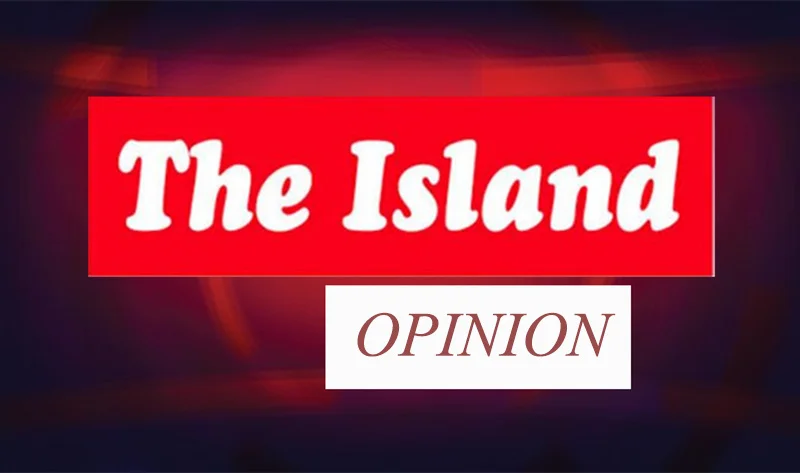
Having meticulously read and re-read the above article published in the opinion page of The Island on the 27 Nov, I hasten to make a critical review on the far-reaching proposal made by the co-authors, namely Professor Theekshana Suraweera, Chairman of the Sri Lanka Standards Institution and Dr. Prabath.C.Abeysiriwardana, Director of Ministry of Science and Technology
The aforesaid article provides a timely and compelling critique of Sri Lanka’s long-standing gaps in evidence-based policymaking and argues persuasively for the institutional adoption of Regulatory Impact Assessment (RIA). In a context where policy missteps have led to severe economic and social consequences, the article functions as an essential wake-up call—highlighting RIA not as a bureaucratic formality but as a foundational tool for smarter governance.
One of the article’s strongest contributions is its clear explanation of how regulatory processes currently function in Sri Lanka: legislation is drafted with narrow legal scrutiny focused mainly on constitutional compliance, with little or no structured assessment of economic, social, cultural, or environmental impacts. The author strengthens this argument with well-chosen examples—the sudden ban on chemical fertilizer imports and the consequences of the 1956 Official Language Act—demonstrating how untested regulation can have far-reaching negative outcomes. These cases effectively illustrate the dangers of ad hoc policymaking and underscore the need for a formal review mechanism.
The article also succeeds in demystifying RIA by outlining its core steps—problem definition, option analysis, impact assessment, stakeholder consultation, and post-implementation review. This breakdown makes it clear that RIA is not merely a Western ideal but a practical, structured, and replicable process that could greatly improve policymaking in Sri Lanka. The references to international best practices (such as the role of OIRA in the United States) lend credibility and global context, showing that RIA is not experimental but an established standard in advanced governance systems.
However, the article could have further strengthened its critique by addressing the political economy of reform: the structural incentives, institutional resistance, and political culture that have historically obstructed such tools in Sri Lanka. While the challenges of data availability, quantification, and political pressure are briefly mentioned, a deeper analysis of why evidence-based policymaking has not taken root—and how to overcome these systemic barriers—would have offered greater practical value.
Another potential enhancement would be the inclusion of local micro-level examples where smaller-scale regulations backfired due to insufficient appraisal. This would help illustrate that the problem is not limited to headline-making policy failures but affects governance at every level.
Despite these minor limitations, the article is highly effective as an advocacy piece. It makes a strong case that RIA could transform Sri Lanka’s regulatory landscape by institutionalizing foresight, transparency, and accountability. Its emphasis on aligning RIA with ongoing national initiatives—particularly the strengthening of the National Quality Infrastructure—demonstrates both pragmatism and strategic vision.
At a time, when Chairmen of statutory bodies appointed by the NPP government play a passive voice, the candid opinion expressed by the CEO of SLSI on the necessity of a Regulatory Impact Assessment is an important and insightful contribution. It highlights a critical missing link in Sri Lanka’s policy environment and provides a clear call to action. If widely circulated and taken seriously by policymakers, academics, and civil society, it could indeed become the eye-opener needed to push Sri Lanka toward more rational, responsible, and future-ready governance.
J. A. A. S. Ranasinghe,
Productivity Specialty and Management Consultant
(rathula49@gmail.com)
-
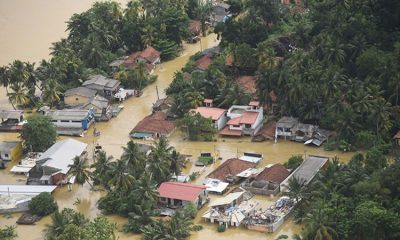
 News6 days ago
News6 days agoWeather disasters: Sri Lanka flooded by policy blunders, weak enforcement and environmental crime – Climate Expert
-
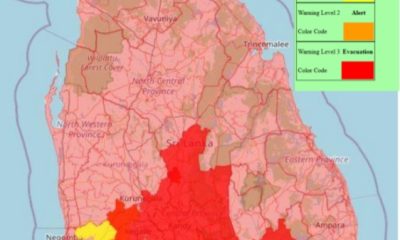
 Latest News7 days ago
Latest News7 days agoLevel I landslide RED warnings issued to the districts of Badulla, Colombo, Gampaha, Kalutara, Kandy, Kegalle, Kurnegala, Natale, Monaragala, Nuwara Eliya and Ratnapura
-
News3 days ago
Lunuwila tragedy not caused by those videoing Bell 212: SLAF
-

 Latest News7 days ago
Latest News7 days agoINS VIKRANT deploys helicopters for disaster relief operations
-
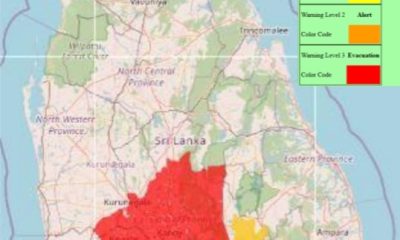
 News2 days ago
News2 days agoLevel III landslide early warning continue to be in force in the districts of Kandy, Kegalle, Kurunegala and Matale
-
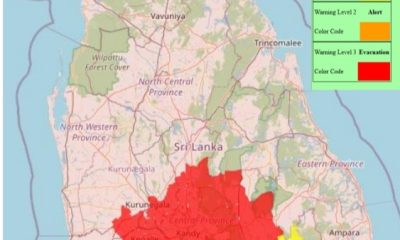
 Latest News5 days ago
Latest News5 days agoLevel III landslide early warnings issued to the districts of Badulla, Kandy, Kegalle, Kurunegala, Matale and Nuwara-Eliya
-
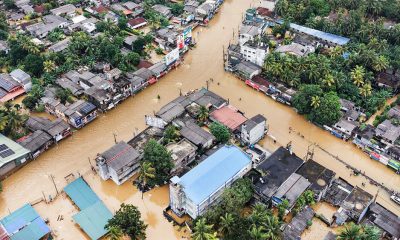
 Features4 days ago
Features4 days agoDitwah: An unusual cyclone
-

 Latest News5 days ago
Latest News5 days agoUpdated Payment Instructions for Disaster Relief Contributions













